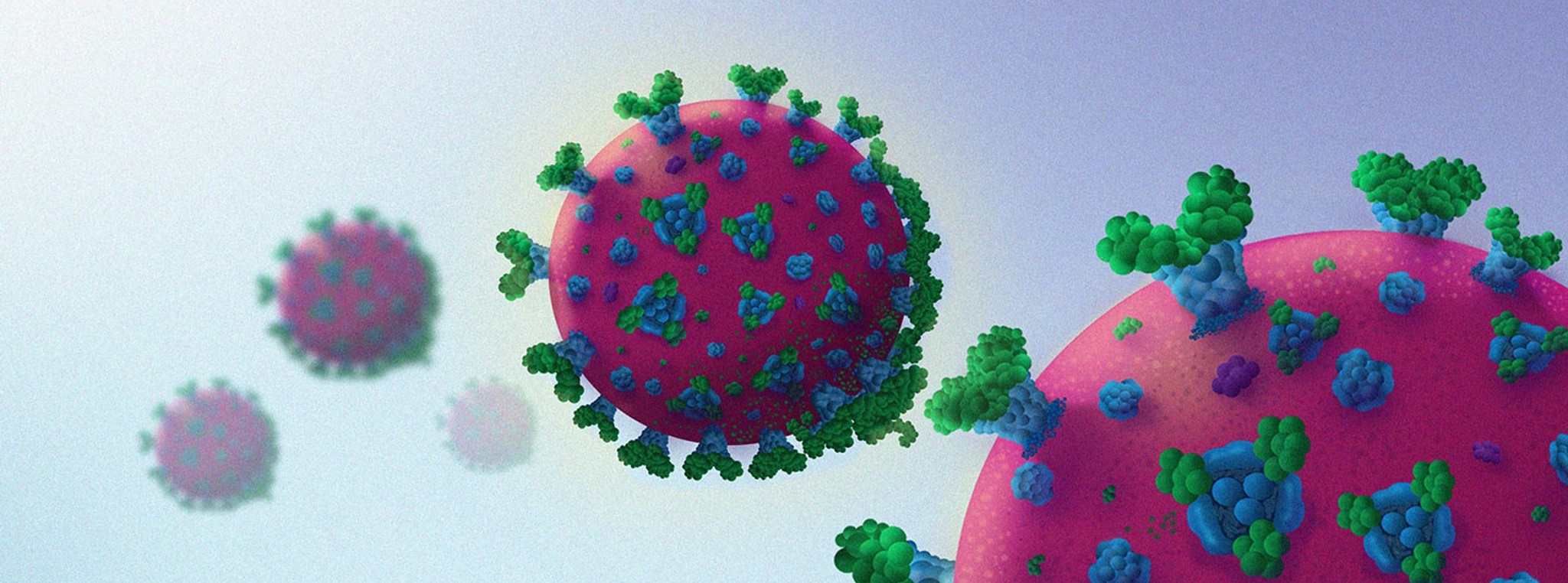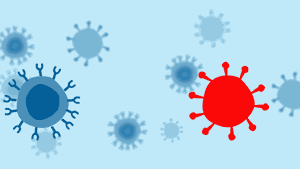
Dana-Farber's Role in the Worldwide Effort to End the Most Common Side Effect of Stem Cell Transplant
April 08, 2022
Research
Stem Cell/Bone Marrow Transplant, Childhood
Stem Cell/Bone Marrow Transplant
By Robert Levy
Since physician E. Donnall Thomas performed the first transplants of stem cells into patients with cancer in 1957, tens of thousands of patients around the world have undergone the procedure. For many, it has represented the only chance of a cure for blood cancers such as leukemia, lymphoma, and myelodysplastic syndrome.
In some patients, however, the cure has come with a cost — a complication known as graft-versus-host disease (GVHD) in which cells from a healthy donor stage an uprising against their new host. The condition can be mild, moderate, or severe — in some cases, life threatening. It can begin soon after the transplant or years later. It may affect a single organ or tissue or multiple organ systems throughout the body. And while treatments and prevention techniques have improved, GVHD remains common, affecting 20-50% of all donor cell recipients. The vast majority of these cases are mild, but about 30% of recipients experience moderate or even severe symptoms.
Progress against GVHD has followed a similar trajectory to advances against other cancer-related conditions. Research into the fundamental biology of the disease has enabled scientists at Dana-Farber and elsewhere to identify points in the process where a subtle intervention — a targeted molecule drug, a chemical treatment — can have a major impact. The results of this work are already evident: Just five years ago, there were no Food and Drug Administration (FDA)-approved follow-up treatments for chronic GVHD. Today, there are three, with more on the way.

"There is an immense amount of research underway now in GVHD," says John Koreth, MBBS, DPhil, Dana-Farber's director of translational research in stem cell transplantation. "Discoveries in the laboratory are increasingly making their way into clinical testing and, ultimately, into standard patient care."
Transplant Offers an Unexpected Weapon Against Tumor Cells
Stem cell transplantation is a rare instance of a treatment whose full benefits became apparent only after it was invented. As conceived by Donnall Thomas and other pioneers of the procedure, patients receive chemotherapy and, sometimes, radiation therapy to destroy diseased bone marrow tissue, where cancerous blood cells originate. Patients are then given an infusion of stem cells from a healthy, matched donor. The stem cells travel to the now-marrowless hollows of the bones, where they settle, or "engraft," and begin producing red blood cells, disease-fighting white blood cells, and platelets to replenish the patient's blood supply.
What wasn't fully anticipated at the time was the extent to which the newly generated white cells themselves constituted a weapon against tumor cells that remained in the body after chemotherapy and radiation therapy. Researchers would eventually discover that this capability — known as the graft-versus-tumor, or GVT, effect — can be at least as potent as the initial chemotherapy and radiation therapy in eradicating the cancer. In transplanting donor stem cells, doctors were not simply replacing a patient's debilitated, weakened white blood cells with fresh, alert ones, they were endowing recipients with a new immune system.

GVHD is the hazardous underside of the GVT effect. It occurs when cells in patients' newly reconstituted blood supply recognize the patient's organs and tissues as foreign and organize an attack on them.
The problem doesn't arise from a defect in the stem cells, but it underscores the complexity of the immune system's technique for identifying cells that belong in the body and rejecting ones that don't. Most human cells carry surface markers known as human leukocyte antigens (HLAs) that function as a kind of birth certificate, identifying where a cell originated. The immune system knows which markers are normal for a particular person. When it encounters a cell with a different pattern of HLAs, it will attack the cell and kill it.
In donor stem cell, or "allogeneic," transplants, patients are matched with donors with a compatible HLA type. Transplants were originally available only to patients with a fully HLA-matched family donor. Today, however, they can be performed with stem cells from matched, unrelated donors, "haplo" or half-matched donors, or umbilical cord blood, vastly increasing the number of patients eligible for the procedure. In an average year, about 12,000 donor cell transplants are performed nationwide.
Acute and Chronic GVHD: Similar Names, Separate Forms
Among the biggest risks associated with a donor stem cell transplant are that the new cells will fail to engraft (a relatively rare outcome) or that they will trigger GVHD after they have engrafted. While the development of partially matched transplants has opened the procedure to many more patients, including those without siblings or children and those from minorities underrepresented in donor registries, such transplants also carry a higher risk of GVHD. The risk can also be higher if the donor or recipient is of advanced age, or if the donor has been pregnant in the past.
There are two major forms of GVHD: acute and chronic. The names derive from a time when the disease was less well understood, and they can be somewhat misleading. One might expect acute GVHD to develop shortly after the transplant, and it often does, but it sometimes emerges months later. Chronic GVHD, for its part, generally does occur later after transplant. Patients may develop either form of GVHD, both forms, or neither. About 20-40% of patients develop acute GVHD in the U.S. in a typical year, and 40-50% develop chronic.

"We now know that the acute and chronic forms are essentially separate diseases, with distinct biologies," says Corey Cutler, MD, MPH, medical director and director of clinical research for the Adult Stem Cell Transplantation Program at Dana-Farber Brigham Cancer Center. "Patients are diagnosed with one or the other based on the symptoms they experience."
Acute GVHD primarily affects the skin, liver, and/or gastrointestinal tract. Chronic GVHD can have a much broader range of effects, potentially involving the skin, mouth, eyes, liver, lungs, joints, gastrointestinal tract, nerves, muscles, genitals, and fascia (connective tissue).
All transplant patients, except those whose cell donor is an identical twin, undergo treatment to prevent GVHD. "There is no FDA-approved first-line treatment for acute GVHD, but for decades, the go-to approach for prevention involved calcineurin inhibitors in combination with methotrexate, which suppress the immune response," says Koreth. "Recently, there's been a shift to use cyclophosphamide, a standard chemotherapy drug, in addition to tacrolimus [a calcineurin inhibitor] and mycophenolate, an immune-suppressive drug. The combination has made it possible to perform half-matched transplants with low rates of severe acute GVHD."
When patients develop acute GVHD, they're likely to be treated with corticosteroids to further suppress the immune system. Treatments for chronic GVHD, like the disease itself, take many forms. If symptoms are limited to a single organ or site, treatment may be applied to that specific area — steroidal ointments for the skin, for example, or immunosuppressive drops for the eyes. If symptoms are severe or multiple organs are involved, treatment usually involves systemic therapies that reach throughout the body. Most patients benefit from these initial therapies, but some, particularly those with severe or widespread symptoms, often don't respond as well.
Dana-Farber Scientists at the Core of GVHD Research
The development of better preventive strategies and first- and second-line treatments has become a top-tier priority in academic medicine and the pharmaceutical industry. More scientists are now working on the problem, with more promising leads and more potential therapies in sight, than at any time in the stem cell transplant era.
The research has one overriding goal: to reduce the risk and severity of GVHD without diminishing the GVT effect. Dana-Farber physician-scientists have been at the center of the effort. Cutler led the ROCKstar study, a clinical trial that demonstrated the effectiveness and staying power of the drug belumosudil in patients with chronic GVHD. The drug, which lowers the activity of immune cells and reverses the tissue scarring and thickening associated with GVHD, alleviated GVHD symptoms in 75% of the 132 patients who received it as part of the trial. Most of the patients had previously received three or more treatments for the disease without lasting or satisfactory results.
The improvements patients experienced lasted for a median of 50 weeks, and fewer than half of those who responded to belumosudil needed additional treatments. Twenty percent of the participants stopped taking steroids for chronic GVHD and 65% were able to take smaller doses. The results contributed to the FDA's decision last year to approve the drug for patients with chronic GVHD who have already tried at least two other therapies for the disease.
"The action makes belumosudil the first drug developed specifically for chronic GVHD to be FDA-approved," says Cutler. "With it, we now have three drugs approved for the disease. The other two, ibrutinib and ruxolitinib, were borrowed from other fields. Belumosudil is probably the most effective compound we have for chronic GVHD right now."
A series of trials led by Koreth and his colleagues led to a treatment that has benefited hundreds of patients with chronic GVHD.
The treatment itself seems counterintuitive. It involves the drug interleukin-2 (IL2), which is best known as an immune system stimulant. Using it to dampen the activity of immune cells responsible for chronic GVHD sounds paradoxical, but Koreth and his associates showed that low doses of the drug had an inhibitory effect. In one early trial, half of the participants, who had received transplants from partially matched donors, benefited from the treatment, their symptoms diminishing markedly.
For IL2 to be approved by the FDA for patients with chronic GVHD, it would need to prove effective in a large-scale clinical trial. But because IL2 is an older medicine without patent protection, pharmaceutical companies lack a financial incentive to sponsor a trial of it for this group of patients, Koreth relates.
"We're encouraged by the fact that some pharma companies are developing modified versions of IL2, which, if approved as standard therapy by the FDA, would be under patent protection, making them attractive candidates for industry-sponsored trials," Koreth states.

The promise of IL2 is evident in a recently published study led by Dana-Farber's Jennifer Whangbo, MD, PhD. The goal of low-dose IL2 treatment, she explains, is not to suppress the number of immune system "effector" T cells that play a role in GVHD, but to increase the number of a subset of T cells, known as T regulatory cells, that rein in the immune response. "Regulatory T cells keep the immune system in balance," she explains. "They prevent effector T cells from being overactive."
The phase 1 trial Whangbo led involved 21 participants, including just 11 pediatric patients, but it was the first to test IL2 in children with chronic GVHD. "These were patients who weren't responding to other therapies and who had advanced cases of the disease," she remarks. Eight weeks after starting treatment, nine of the participants had reduced symptoms; by six months, they all showed improvement. At the one-year mark, some of them had their symptoms resolve completely. The results, Whangbo says, were unexpectedly better than those achieved in adults. The findings have prompted the Children's Oncology Group, which organizes trials across multiple centers, to develop a phase 2 study that will involve 35 patients.
New Options for Acute GVHD
Dana-Farber researchers also have the acute form of GVHD in their sights. At recent scientific conferences, Koreth has presented encouraging results from a phase 1 trial of itolizumab, a new medication for the disease. The drug blocks a protein on certain immune cells that sends the immune system into action. Blocking the protein, known as CD6, doesn't kill the immune cells or deplete them but causes them to reverse course: instead of spurring the immune response, they draw it down.
The trial tested a combination of itolizumab and steroid therapy in patients with a severe form of acute GVHD. "By day 28 — the standard point for evaluating these therapies — almost two-thirds of the participants showed improvement, half of whom had a complete response," the elimination of all symptoms of the disease, Koreth relates. "Many of the responses have been durable, lasting at least six months. And many of the patients who responded were able to taper off steroids. The next step is a large, international clinical trial."

Focus on GVHD Prevention
Dana-Farber researchers also continue to explore ways of preventing GVHD. A recent study led by Mahasweta Gooptu, MD, for example, found that stem cells from a closely matched unrelated donor provide superior outcomes to those from haplo-matched donors when the cyclophosphamide GVHD prevention regimen is used. When a matched unrelated donor isn't available, a haploidentical donor "is absolutely a reasonable alternative," Gooptu says.
The study was the first to compare the two types of transplants when both groups of recipients were treated with cyclophosphamide to prevent GVHD. "Our hypothesis was that the outcomes would be similar, but the findings of this study disproved that hypothesis," says Gooptu.

Another trial, led by Leslie Kean, MD, PhD, director of the Pediatric Stem Cell Transplant Program at Dana-Farber/Boston Children's Cancer and Blood Disorders Center, showed that adding the drug abatacept to standard GVHD prevention regimens can make it safe for more patients to undergo either an HLA-matched or partially matched unrelated donor stem cell transplant. This is of particular benefit for patients whose ethnicities aren't as well represented in the national registry of potential stem cell donors and who often require partially matched donors. On the basis of Kean's trial and real-world evidence from the Center for International Blood and Marrow Transplant Research, abatacept last year became the first therapy to win FDA approval for the prevention of acute GVHD after a matched or partially matched unrelated donor transplant.
"The fact that we now have several FDA-approved compounds; the fact that we have a better understanding of how these diseases work; and the amount of interest in GVHD by pharmaceutical companies are tremendous," Cutler remarks. "In many ways, we're in a new era for prevention and treatment of this complication."
GVHD may occur when a donor's stem cells (in blue) treat some of the body's cells (in red) as foreign and destroy them.